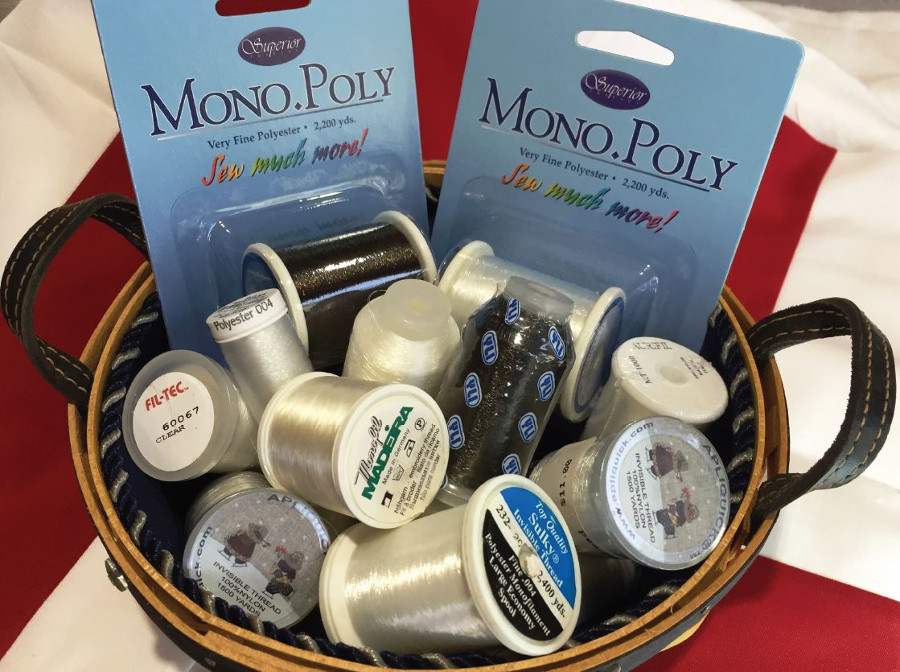Quilting the Quilt: Now you see it, now you don’t
When you’re faced with choosing the “lesser of two evils,” wouldn’t it be nice to have a third option pop up that suddenly saves you? Invisible thread to the rescue!
When stitching in the ditch on two-color quilts with high contrast, it feels like a no-win situation if my only options are stitching with either thread color. If the quilt has red and white stripes, somewhere along the way I’m bound to wobble just a bit and look bad. If I use white thread, it will blatantly show up on the red fabric if I wander out of the ditch. And it could look even worse if I try to use the dark thread on white fabric.
While I could certainly switch thread colors often and bounce back and forth between the two colors, that would add hours and hours to my quilting time.
Instead of stressing about where every stitch lands (I’m a believer in the maxim “done is better than perfect”), I give myself a break and use products and tricks that make me look good without adding the pressure of perfection. Invisible thread is my secret stress buster.

Its chameleon-like characteristics allow it to blend into its surroundings while adding quilting texture where I need it. It’s great for stitching in the ditch, for quilting in and around appliqué or embroidery, and even for embellishing techniques such as couching or stitching with metallic thread.
Many years ago, invisible thread crossed over into the quilting world from the upholstery and home decorating arena where it was used to hem draperies and hem bedspreads and comforters. It was much heavier and thicker to withstand the rigors of use in those applications. Quilters loved the idea of invisible thread, but they hated its coarse, stiff feel that resembled heavy fishing line. It was also very strong—so strong that it could wear grooves into the metal thread guides on quilting machines. Quilters worried that it would not take long to also slice through more delicate cotton quilting fabrics, leaving their quilts in shreds.
Even though invisible thread has improved dramatically over the past two decades, some quilters still give it a bum rap, shunning it as a viable option for quilting. If you’ve been avoiding it in your quilting, it’s time to give it another chance. Contrary to popular lore, today’s invisible threads will not cut your quilting fabric. Their elasticity and smooth finish make them perfect for many quilting techniques.
Invisible quilting thread is typically 4-thousandths of an inch thick (.004 diameter)—about as thick as one strand of human hair. Some invisible thread is slightly thicker—check the label. It comes in “clear” for light-colored fabrics as well as “smoke” for use with darker colors so that you can hide it even better on your quilt.
You can find invisible thread in two formulations—polyester and nylon. Each has merits and drawbacks. Polyester invisible thread is very heat tolerant and doesn’t typically yellow over time from UV light exposure. However, it can sometimes feel stiffer and appear shinier. Nylon invisible thread may get brittle after long exposure to UV light. Yet it may feel softer and have a more matte appearance. Several brands are available in each style.
I choose polyester invisible thread with projects like T-shirt quilts where I must cross over many different colors and I don’t want to detract from the shirts with stitching lines that obscure the graphics. But I personally choose nylon invisible thread when stitching around applique or highlighting embroidery designs because—at least to my eye—it seems to reflect the light a little less than some polyester invisible thread brands. But each quilt is different and each quilt’s purpose is unique. Choose the thread that’s right for your project.



